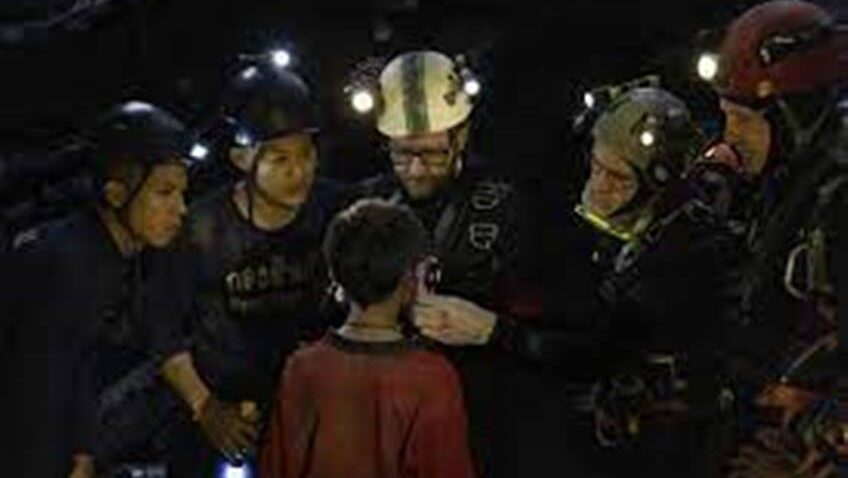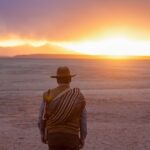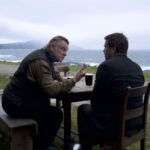Joyce Glasser reviews Thirteen Lives (July 29, 2022) on Prime Video from Friday 5 August, Cert 12A, 147 mins.
Just over a year ago National Geographic’s excellent documentary on the Tham Luang cave rescue captivated us with the rescue procedural and human interest stories behind the headlines that gripped the world in the summer of 1918. Now, the story gets the Hollywood Treatment, from esteemed American director Ron Howard. And why not? Though this is not an American story he’s filmed underwater in Splash and In the Heart of the Sea, reached for the moon in Apollo 13, has directed documentaries, including the Beatles: Eight Days a Week and Pavarotti and, as a child actor himself, knows about directing young non-actors.
At a time when the worst of humanity is on show, Howard maintains that the Thai story shows the best of humanity, when 5,000 selfless volunteers from 17 nations rushed to the cave to participate in the astonishing rescue. We have a diverse range of heroes, from an elite group of international amateur cave divers to the Thai Navy Seals, a veteran guru of the forest in which the cave was located, a proud army general, Saman Kunan, a retired Seal who lost his life for the boys, and a water management expert who declares the pumps are insufficient and the cave water must be diverted by flooding the crop fields around the mountain. For the sake of the boys, the farmers agree to see their harvest devastated (the Thai government reimbursed them). Then there is the heroic local Mayor due to leave office that week who was ordered to remain, perhaps left to fail by opponents who wanted him out.
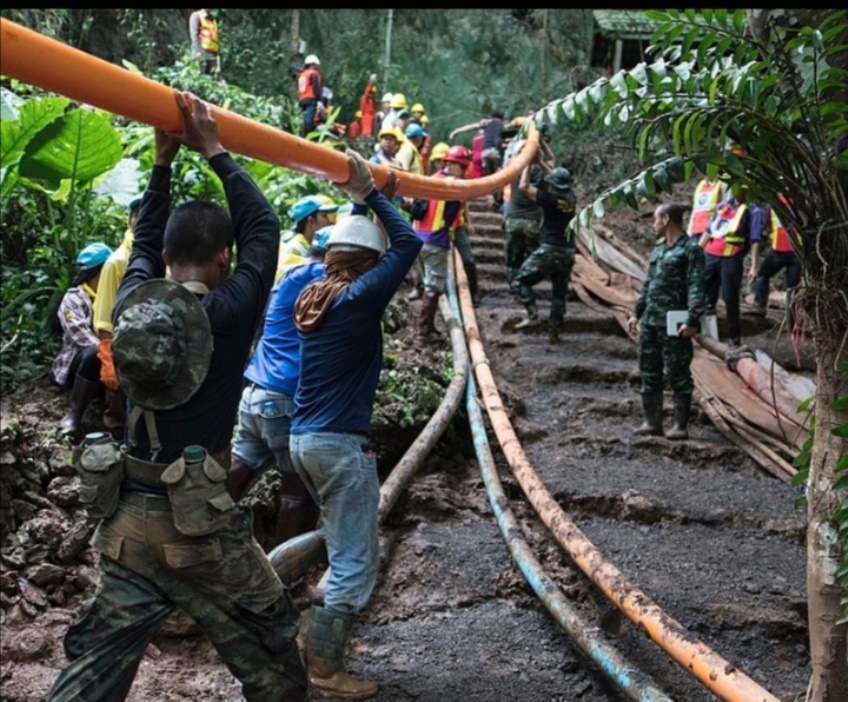
In a Q & A, Howard said making a feature would enable him to dramatise these personal stories but ironically the documentary, which presents some of the real heroes and their backstories on camera, Richard Stanton, a retired firefighter (Viggo Mortensen), Volanthen (Colin Farrell) an IT consultant, and Richard Harris (Joel Edgerton) the reluctant anaesthetist, torn between the Hippocratic Oath and the “do or die” scenario presented to him.
Just the right amount of weight if given to the latent conflict and mistrust between the Thai command and the divers who are not only “old men” by Navy Seal standards, but are foreigners who don’t know the caves, and are amateurs. Absent from Howard’s script is American Sergeant Derek P Anderson of the US Air Force European Command who believed in the experience of the volunteers (whose experience in narrow, dark caves was in contrast to the Seals’ open water diving) and their specialised equipment, and who urged them to think outside of the box about how to get the boys out of the cave.
When, against all odds on day ten Stanton and Volanthen do come across the boys, it’s a eureka moment in the film, and brilliantly staged. But their euphoria turns to fear as they start to contemplate the risk of getting the boys out alive, with oxygen levels falling, the rains picking up, ten days without food.
What Howard does very well is present this risk, and the urgency to save the boys, using maps, graphs and captions that inform us of the day and (and how many days the boys have been in the cave) to remind us of the challenges ahead.
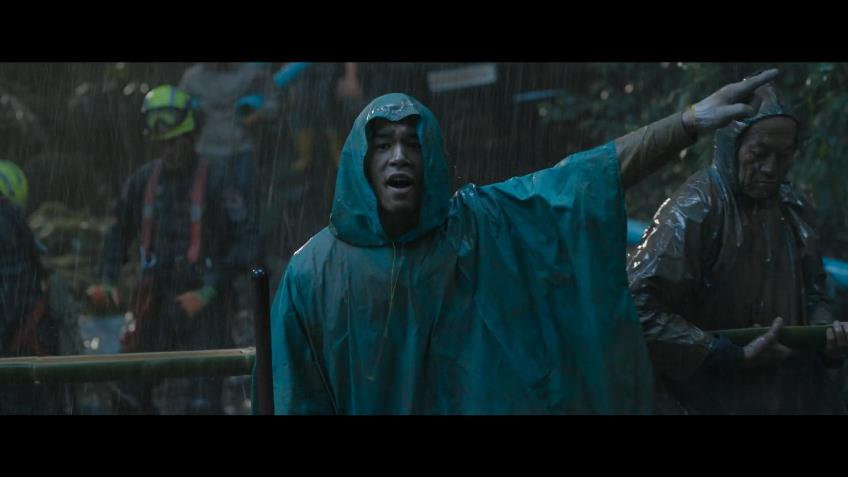
The cave winds its way for ten kilometres beneath a mountain between Myanmar and Thailand (in the north of the country) in the Mai Sae district of Thailand and is steeped in folklore, to which the film pays tribute. Because it is shaped like a reclining woman it is called Tham Luang Khun Nam Nang Non – “the great cave and water source of the sleeping lady mountain.”
Images of a weather beaten statue to the goddess punctuate the film and the revered Monk Kruba Boonchum blesses amulets that one mother asks the non-believing, no-nonsense Stanton to take with him for safety. When he arrives back in England, he finds the amulet in his pocket and wonders if, it, too played a role.
Howard recreates the chaotic hive of activity at the mouth of the cave where makeshift food stations were set up and facilities for the volunteers. In a nice detail, we see how the thousands of paparazzi are cleared away once the actual rescue of the boys begins with it’s inherent danger.
If the first half is rushed, not so the second half and once “Harry” or Dr Harris shows up, the miraculous nature of the rescue takes shape. For by a quirk of fate, on their first exploratory dive, while they return without having found the boys, they do find a stranded engineer who had been forgotten in the cave. Although he is an adult with diving experience, and is close to the entrance of the cave, he panics as the two divers try to take him out with an oxygen mask, and they realise such a tactic will be impossible for the boys, once they can order masks small enough for their faces.
The solution that the British came up with was to anesthetise the boys, and for this they called upon a well-known Australian amateur diver and anaesthesiologist Dr Richard Harris mentioned above. Once Harris reluctantly agrees to drug the boys at the shelf 2,500 meters into the cave, they realise they will need more amateur divers to swim out with one boy each, giving their charge “top up” doses of ketamine to keep them asleep during the long journey out. One such diver is Chris Jewell (Tom Bateman) who saves a boy’s life but almost loses his own. There are few adventure films with moments as tense as these.
The headlines we read did not contain some aspects of the rescue for the press was cleared from the scene, and even the parents and most of the government were kept in the dark about some of the things that were needed to be done. So while we know the happy ending, we do not how it came about.
Equally fascinating is the role of a very young coach, a former monk who thought he would be hated by the parents for allowing the kids into the cave out of season. But Howard includes the letters of gratitude sent with the Seals and divers to the monk who was the last one out. The coach managed to help keep the boys alive, teaching them how to conserve energy and oxygen, how to meditate to keep calm, and by keeping up their faith and hope.

